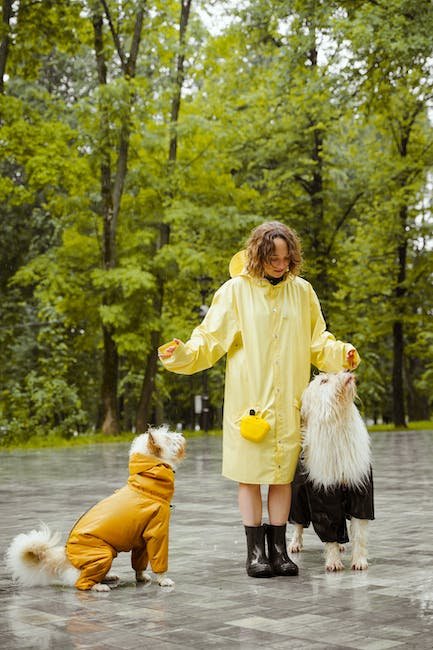
Affection as a Reward in Dog Training
When it comes to training dogs, it is easy to get caught up in the idea of treats and verbal praise as rewards. However, it is important not to underestimate the power of affection as a reward – a simple pat on the head or a belly rub can work wonders in reinforcing positive behaviors and strengthening the bond between dog and owner.

Hand Signals in Dog Training: A Positive Reinforcement Guide
Effective dog training involves more than just verbal commands - hand signals can be a powerful tool in building a positive, intuitive bond with your furry friend. Discover the art of using hand signals in dog training and unlock a whole new level of communication, trust, and obedience.

Crate Training Your Dog Using Positive Reinforcement
Crate training your furry companion using positive reinforcement is a gentle yet effective approach towards behavior modification. With patience and treats, transform the crate into a safe haven that offers comfort, security, and a place where your dog can truly unwind.

Positive Reinforcement Techniques for Fearful Dogs
With the power of positive reinforcement, fearful dogs can slowly overcome their fears. By rewarding them with treats and praise for calm behavior, they learn to associate their triggers with pleasant experiences, leading to a more confident and happy pup.

Building a Reward System for Your Puppy
Creating a reward system for your puppy is like crafting a magic potion of motivation and positive reinforcement. With a sprinkle of treats, a dash of praise, and a generous pour of consistency, you'll be on your way to shaping a well-behaved and happy canine companion.

Dog Training for Ankle-Biting: Nipping the Habit
Having a dog who constantly nips at your ankles can be both frustrating and painful, but fear not, there are effective training techniques to tackle this habit head-on. With patience, consistency, and positive reinforcement, you'll soon see your ankle-biter transform into a well-mannered companion.

The Do’s and Don’ts of Rewarding Your Puppy
Rewarding your puppy can be a tricky balancing act - too many treats can spoil them, but not enough can discourage them. Find the sweet spot by using positive reinforcement techniques like praise and playtime while keeping treats as occasional surprises, ensuring a well-behaved and happy furry friend.

Potty Training Your Puppy with Positive Reinforcement
Potty training your precious furry friend doesn't need to be an uphill battle; embrace the power of positive reinforcement! By rewarding your puppy with treats, praise, and affection whenever they do their business outside, you'll create a loving bond while teaching them the art of good bathroom manners.

The Dog Training Reward Hierarchy: What You Need to Know
In the world of dog training, understanding the reward hierarchy is crucial. From treats to praise, it's a delicate balance that can impact your furry friend's learning experience. Discover the secrets to unlocking their full potential and creating a lasting bond.

Resource Guarding: Dog Training with Positive Reinforcement
Resource guarding is a common behavior in dogs, but it can be managed effectively through positive reinforcement training techniques. By using rewards and praise, dogs can learn to associate people approaching their resources with something positive rather than threatening, creating a more harmonious and trusting bond.

The Power of Positive Reinforcement in Puppy Training
Puppy training becomes a joyful journey when positive reinforcement takes the lead. With treats, toys, and praise, we can shape our furry friends' behavior towards the desired path, enhancing their confidence and building a bond that lasts a lifetime.
